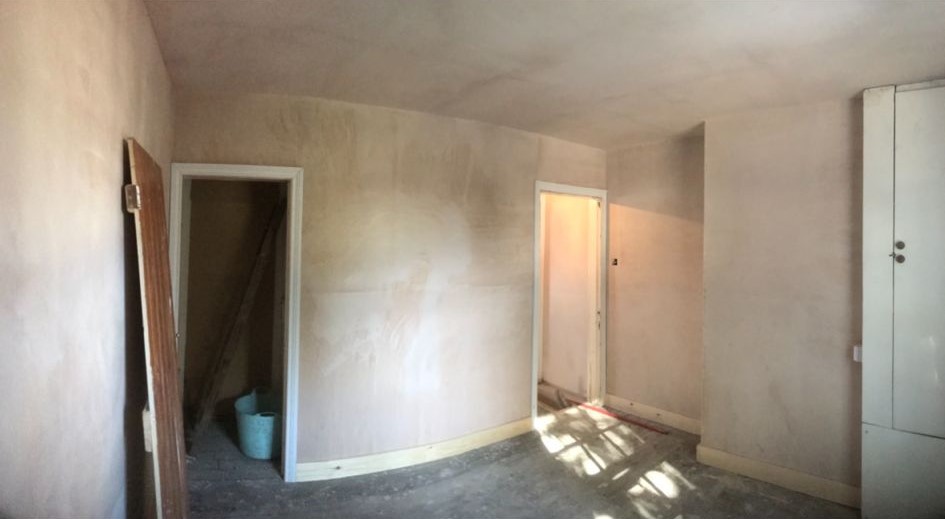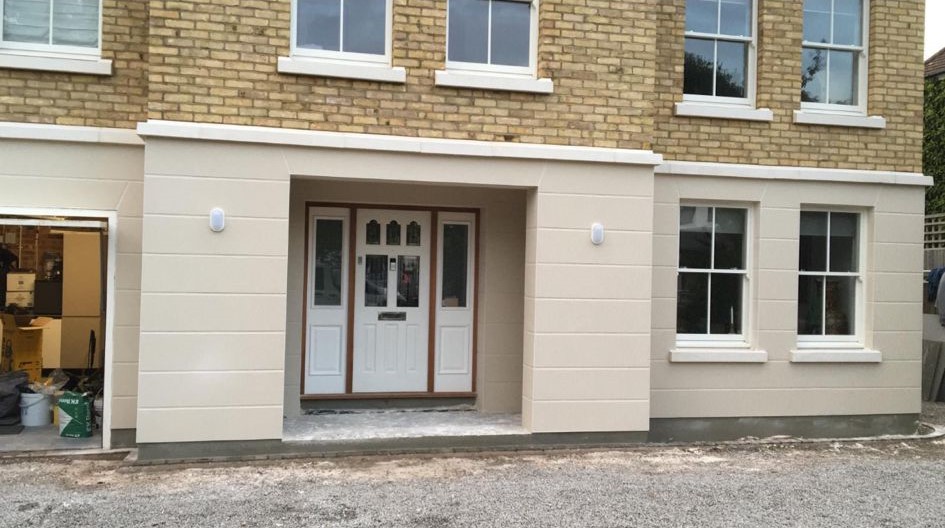Plastering is an essential skill in the world of home improvement, offering both aesthetic and practical benefits. Whether you’re looking to refresh the interior of your Surrey home or tackle a new DIY project, understanding what surfaces can be plastered over is crucial. This blog post aims to explore the possibilities, limitations, and best practices for plastering over various common and less-conventional surfaces. We’ll cover everything from painted walls, wallpaper, and wood to expanding foam, tiles, and cement board. By the end of this read, you’ll have a clearer understanding of how to achieve that perfect finish, no matter what you’re working with. Let’s get started!
Can You Plaster Over Paint?
Understanding the Basics
It’s a common question among homeowners and DIY enthusiasts alike—can you plaster over paint? The short answer is yes, but certain conditions must be met. Painting often adds a layer that needs careful consideration before plastering.
Ensuring Adequate Adhesion
One of the primary challenges when plastering over paint is ensuring adequate adhesion between the plaster and the painted surface. If the paint is glossy or has oil-based elements, it may prevent the plaster from sticking effectively. Sanding the surface lightly and using a bonding agent can improve adhesion.
Preparing for Success
Preparation is key. Begin by cleaning the painted surface thoroughly to remove dust, grease, or grime. Next, sand down any glossy areas to create a rough texture that the plaster can grip onto. Applying a PVA (polyvinyl acetate) primer can also enhance the bond between the old paint and the new plaster.
Can You Plaster Over Wallpaper?
The Wallpaper Dilemma
Plastering over wallpaper might seem like an easy shortcut, but it comes with its set of challenges. The main issue is the integrity of the wallpaper itself—if it’s peeling or damaged, it won’t support a plaster layer well.
Risks and Considerations
The risk of plastering over wallpaper includes the potential for bubbles, cracks, and uneven finishes. Moisture from the plaster can loosen the wallpaper adhesive, causing it to peel away from the wall. It’s generally advised to remove the wallpaper before applying plaster.
When Removal Isn’t an Option
If removing wallpaper isn’t feasible, ensure it’s firmly attached to the wall. Apply a primer or PVA solution to seal it, and consider using a thin coat of plaster to test the adhesion. If successful, proceed with a full application, keeping an eye out for any issues.
Can You Plaster Over Wood?
Wood and Plaster—A Tricky Combination
Plastering over wood can provide a unique aesthetic but poses challenges due to wood’s natural properties. Wood expands and contracts with temperature changes, which can cause plaster to crack if not applied correctly.
Preparing Wood Surfaces
Start by ensuring the wood surface is clean and dry. Use a bonding agent designed for wood surfaces to help the plaster adhere better. Additionally, applying a mesh or lath can provide a stable base and minimize movement.
Achieving a Durable Finish
For the best results, use a plaster mix designed for flexibility. This will accommodate the natural movement of wood without compromising the plaster’s integrity. Applying multiple thin layers rather than one thick layer can also reduce the risk of cracking.
Can You Plaster Over Expanding Foam?
A Modern Solution
Expanding foam is commonly used for insulation and filling gaps, but can it be plastered over? The answer is yes, if done correctly. Expanding foam provides a smooth and even surface, making it suitable for plastering under certain conditions.
Surface Preparation
Ensure the foam is fully cured and trimmed to the desired shape. Light sanding may be necessary to roughen the surface for better adhesion. A primer or bonding agent can further enhance the bond between the foam and the plaster.
Applying Plaster to Foam
Use a lightweight plaster mix to avoid adding excessive weight to the foam, which could cause it to compress. Apply a thin layer first to ensure proper adhesion and build up as needed for the desired finish.
Can You Plaster Over Tiles?
The Tile Challenge
Plastering over tiles can transform a space without the hassle of tile removal, but it requires careful preparation. Tiles are typically smooth and non-porous, which means plaster won’t naturally adhere well without some help.
Preparing Tiled Surfaces
Start by cleaning the tiles thoroughly to remove any residues. Roughen the tile surface with sandpaper or a grinder to create a texture the plaster can grip. Apply a bonding agent to further improve adhesion.
Techniques for Plastering Over Tiles
Apply a base coat of plaster designed for use over non-porous surfaces. Once set, apply additional layers as needed to achieve a smooth finish. Keep in mind that the overall thickness should not be excessive to prevent potential detachment.

Can You Plaster Over Cement Board?
A Solid Foundation
Cement board is a popular substrate for plaster due to its durability and stability. It’s commonly used in areas exposed to moisture, such as bathrooms and kitchens, making it an ideal candidate for plastering.
Preparing Cement Board
Ensure the cement board is installed correctly, with all joints taped and filled. A skim coat of thin-set mortar can provide an excellent base for plaster application, enhancing the bond and smoothing out any imperfections.
Applying the Finishing Touches
Once the base is ready, apply the plaster in thin layers, allowing each to set before adding the next. This ensures a strong bond and reduces the risk of cracking. Cement board can support a variety of plaster finishes, allowing for great creative flexibility.
Conclusion
Plastering over various surfaces can be a rewarding way to revamp your living space or add a new dimension to your home. Whether you’re dealing with paint, wallpaper, wood, foam, tiles, or cement board, understanding the unique challenges and preparation required can lead to a flawless finish. Remember, the key to successful plastering is in the prep work and choosing the right materials for the job. If you’re in Surrey and looking to tackle a new plastering project, consider these tips and don’t hesitate to consult a professional if needed. With the right approach, you can achieve stunning results that enhance both the function and aesthetics of your space. Happy plastering!



